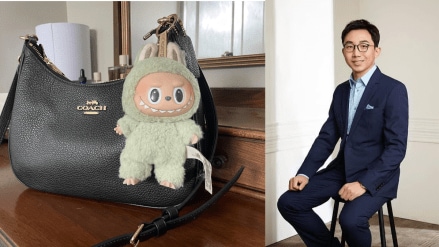In 2010, Wang Ning opened a modest toy store in Beijing’s tech district, Zhongguancun. Fifteen years later, that store has evolved into Pop Mart International, a $46.1 billion publicly listed company whose success story is now inextricably linked to an oddball creature with a fangy grin and oversized eyes: Labubu.
In Q1 2025, Pop Mart reported a 165%-170% sales jump, largely fueled by Labubu’s growth and strong international presence. As of mid-2025, its shares have climbed nearly 200% year-to-date, with its market capitalisation nearing HK$300 billion (~$38.5 billion USD). Furthermore, Wang has emerged as China’s 10th richest individual, per Forbes’ Real-Time Billionaires List, with a net worth of $22.7 billion. What pushed him to the top? A small vinyl figure barely a few inches tall that has become a social media darling, a fashion accessory, and a speculative investment asset all rolled into one.
Labubu’s craze
Labubu was born not in a marketing lab, but in the sketchbooks of Kasing Lung, a Hong Kong-born artist raised in the Netherlands. Originally inspired by European folklore, Lung created Labubu in 2015 as a mischievous elf-like character. The game-changer came in 2019, when Lung partnered with Pop Mart, licensing Labubu for mass production and global distribution.
Pop Mart, which had already dabbled in “blind box” toys, a format where consumers buy sealed boxes without knowing the exact contents, immediately saw potential in Labubu. Its unsettling charm and “punk-cute” aesthetic helped it stand out in a crowded collectables market. As Labubu’s fame soared, so did its commercial footprint. The character now appears in more than 300 variations across plush toys, vinyl figurines, fashion accessories, and even high art auctions.
The ‘Blind Box’ business model
Key to Labubu’s commercial success is the blind box model, a gamified form of retail where surprise becomes part of the value proposition. For Pop Mart, this has proven a goldmine. In 2024, its Labubu-led “The Monsters” series generated over 3 billion yuan (about $413 million), marking a staggering 726.6% jump from the previous year.
Pop Mart keeps demand high by engineering scarcity. Flash releases, tight restocks, and limited-edition drops are the norm. This has created not just a primary retail frenzy, but also a booming secondary market. Rare Labubu figures have sold for up to $150,000, with StockX listing the toy as its most-traded brand in the collectables category for eight months running.
Global cult
Labubu’s appeal has been amplified by its appearance on TikTok, where unboxing videos rack up millions of views, and by celebrity endorsements from BLACKPINK’s Lisa, Rihanna, and Dua Lipa. In Singapore, a Merlion-themed Labubu sold out within minutes. In Thailand, the toy was named an “Amazing Thailand Experience Explorer” by the national tourism board. At Paris Fashion Week, Labubu was seen swinging from Hermès bags.
For Pop Mart, this isn’t just branding, it’s diplomacy. Labubu is quietly becoming a soft power export, emblematic of China’s ambitions to move from being the “world’s factory” to a global creative hub.
Affordable luxury
Labubu thrives in what marketers now call the “experience economy”, where emotional resonance, social capital, and personal storytelling often matter more than traditional product features. Whether you see Labubu as creepy or cute, it offers what many Gen Z and millennial consumers crave: nostalgia, individuality, and community. This is particularly evident in Pop Mart’s pricing strategy. Entry-level Labubu figures are accessible at $20–$30, while premium limited editions and rare pieces fetch thousands. This range allows the brand to appeal across socio-economic tiers, functioning both as an impulse buy and an “affordable luxury”.
Labubu has even transcended toy status to become a tradeable asset. Plushes have been swapped for Coachella tickets; rare figures have been used in transactions akin to trading designer handbags. A meme coin, $LABUBU, now circulates on the Solana blockchain, anchored to the toy’s real-world cultural cachet.
Growing pains
Yet, there are challenges. The toy’s runaway popularity has spawned counterfeit markets, affectionately dubbed “Lafufu” by collectors, and the surge in demand has led to operational chaos, including in-store brawls and sales restrictions in the UK. Pop Mart’s tight grip on scarcity, while effective for hype, could alienate genuine fans over time.
There’s also the question of staying power. While Pop Mart is expanding “The Monsters” universe to include characters like Zimomo and Mokoko, there is always the risk of trend fatigue. However, with more than 13 of its IPs generating over 100 million yuan annually, Pop Mart appears to be hedging against over-reliance on any single character.
At the bottom line, this story is a testament that Wang Ning’s scrappy monster might just be the face of a new kind of soft power: one sold in blind boxes, packaged in nostalgia, and carried in designer bags.
